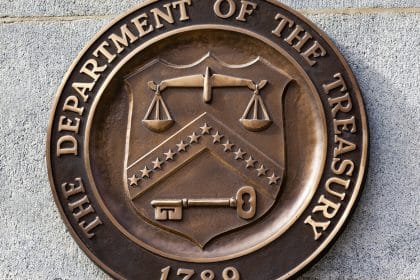Treasury yields surged in light of the Fed’s latest rates hike, with the 2-year yield establishing a new 15-year high.
The yield on the 2-year Treasury recently attained a new 15-year high as markets assessed the Federal Reserve’s latest rate hike. This yield increase also comes amid a general uptick in yields on Friday. Regardless, speculations on the economy’s future growth trajectory continue to spread.
The US 2-year Treasury topped 4.2% after hitting its 15-year high of 4.266% earlier in the session. It last traded up 12 basis points to 4.246%. Furthermore, the 10-year Treasury yield also went up and last traded up 9 basis points at 3.801%. The last time the 10-year yield experienced a similar development was nearly 11 years ago.
The US Federal Reserve recently raised interest rates by an additional 75 basis points as part of its ongoing fiscal evaluations. As the central bank continues to combat inflation, it has said several times that it will remain aggressive with its policies. This includes hiking rates by 4.4% at the end of the year and an additional 4.6% in 2023. In light of the Fed’s aggressive stance, other central banks across the globe are also implementing substantial rate increments. Touching on this developing trend, Tom Essaye of the Sevens Report wrote to clients:
“While we are likely much closer to the end of the increase in global rates than we are the beginning, it’s still going to take a peak in global inflation and a drop in global economic activity for yields to stop this rise and begin to decline.”
In Light of Treasury 15-Year High, Focus Now on September Flash PMI Data
US Treasury yields for 2, 10, and 30 years also traded higher at the beginning of the month amid a looming recession. The development resulted from a late rally in July, even as investors continued to take cues about the economy. This development also extended to the traditional markets, with stock prices soaring.
Following the Federal Reserve’s latest interest rate hike, attention now turns to another key economic optic – September’s flash PMI data. Set for release today, this data report provides markets with preliminary insight into the economic state of the manufacturing and services industries. In addition, the September flash PMI data also serves as a key indicator for inflation and recession concerns. Essentially, this reflects whether industries are expanding or contracting, as well as the state of demand and supply.
Based on developments so far, analysts expect the services sector to inch higher after its sharp shrinkage last month. In addition, speculations also suggest that growth in the manufacturing industry will decline after hitting a stumbling block in August. Last month, the manufacturing industry slowed to levels not seen since the pandemic era of 2020.
Growth Estimate and Terminal Rate
In addition to hiking interest rates, the Federal Reserve also increased its terminal rate and lowered its growth estimate. The Fed now expects the US economy to grow 0.2% in 2020, much lower than June’s 1.7% forecast. Furthermore, the apex bank raised its terminal rate to 4.4% for 2022, higher than June’s 3.4%. The terminal rate is the peak point for interest rates before the hikes stop.
next